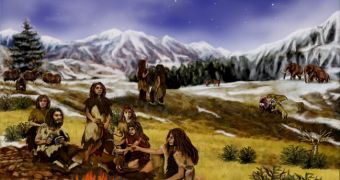When you call someone "a Neanderthal", you refer to that person as extremely rude and wild. But the more we investigate our extinct cousin, the more we find out about his complexity. A new genetic research even says they could have spoken in the same manner modern humans do.
Since the first discovery of a Neanderthal over 150 years ago, researchers have discovered they were as technologically advanced as our ancestors, making similar tools and shelters, but whether Neanderthals also had a complex language, rather than basic vocalizations, grunts and groans, like in apes or not, has been the subject of hot debate all this time.
To check this, the research team analyzed DNA from Neanderthal bones encountered in a cave in northern Spain, focusing on a gene, FOXP2, which has been the only one found by now to have a crucial role in speech and language. People with a mutated variant of this gene have speech and language disorders.
A correspondent of FOXP2 is encountered in the genomes of all vertebrates, from fish to reptiles, birds and mammals. The human variant of FOXP2 encodes a protein different from chimpanzee FOXP2's by only two amino acids, the building blocks of all proteins.
Previous studies pointed that the modern human type of the gene appeared less than 200,000 years ago. But the new analysis shows that Neanderthal FOXP2 gene is similar to ours. Neanderthal lineage broke off the Homo sapiens at least 300,000 years ago. Still, some recent researches have pointed that the two species could have intermingled after that, however.
"It is possible that Neanderthals spoke just like we do," lead researcher Johannes Krause, paleogeneticist of the Max Planck Institute for Evolutionary Anthropology in Leipzig, Germany, told LiveScience.
"Of course many genes are involved in language. As scientists discover more of such genes, these will have to be examined in Neanderthals as well. Some might suggest that interbreeding or "gene flow" (aka sex) between modern humans and Neanderthals led to us having FOXP2 in common. However, we see no evidence for gene flow in the Y chromosome sequences," said Krause.
Y chromosomes of Neanderthals and modern humans are extremely different in the DNA sequences.

 14 DAY TRIAL //
14 DAY TRIAL //